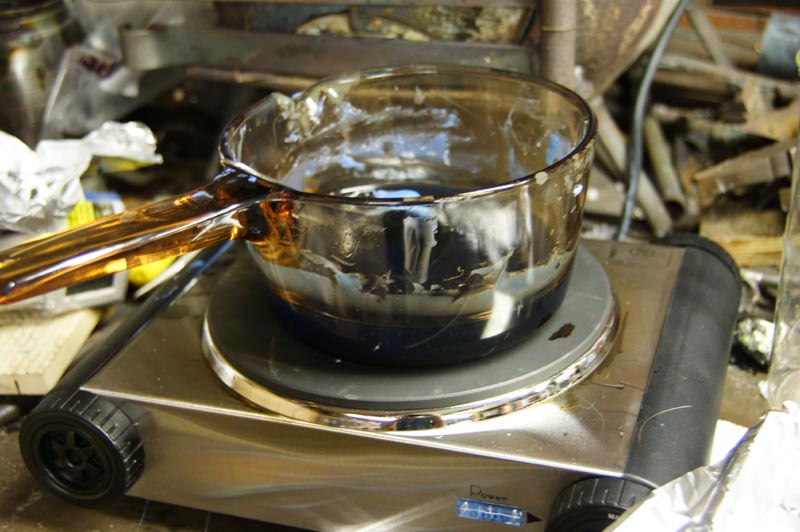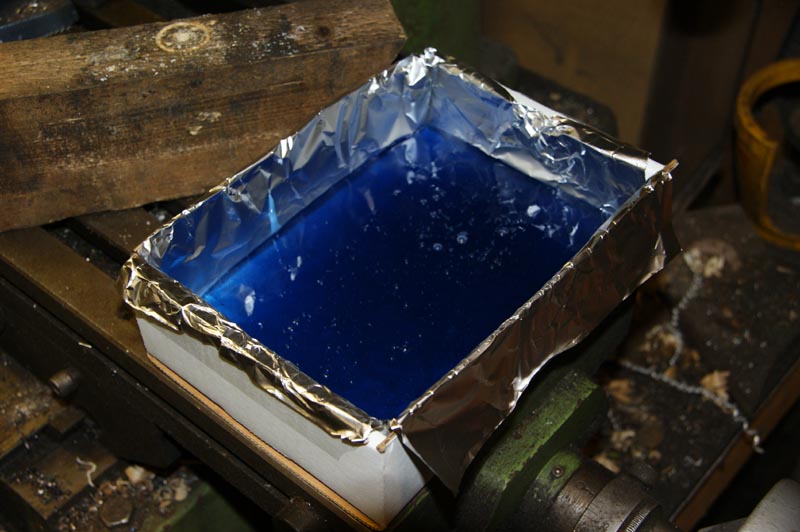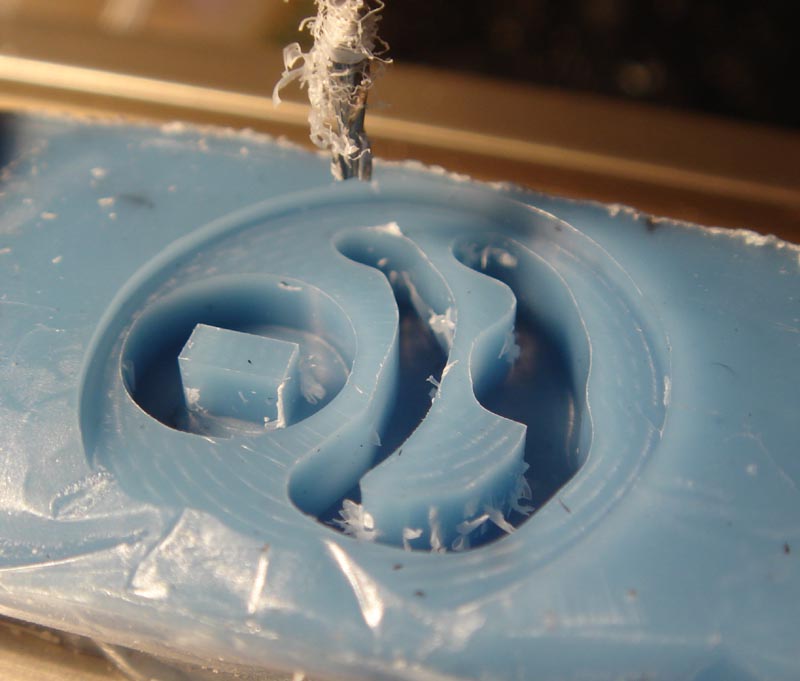(4/08)
One of the things I want to try is machining wax masters for lost-wax casting. Buying proper machining wax is obviously possible but unsporting, so I set out to make it.
I found a few other hardy souls who had tried it, most usefully this PDF and this CNCzone thread.
.So, the basic recipe seems to be paraffin wax with 10-25% polythene. For my first experiment, I used this refined 56-58C paraffin wax and a roll of cheap HDPE food bags. I also added a bit of candle colouring from the same supplier, so I could see what I was doing. They are the very thin, relatively crinkly ones. I was heating the wax in a saucepan on an electric hotplate, and watching the temperature with a thermocouple. Once the wax was melted I put the shredded HDPE in gradually. To shred it, just slice up the roll of bags with a sharp knife.
The HDPE melted into clear, sticky blobs floating about in the wax, but did not dissolve. After I'd kept it at 200C for a while I got bored, and poured it out through a disposable sieve.
It's a good thing it was disposable, because most (or all) of the polythene stayed in the sieve in gloppy lumps. HDPE is clearly not the way to go.
So, the next thing was to try 10% LDPE. That's generally thicker, softer, and more oily-feeling. I used some air-pillow packaging material. This time, it dissolved below 200C with no trouble. I did have to stir it for a while to get rid of all the lumps, and the mix went visibly more viscoous as they dissolved.
Once it had cooled, I machined a lump, Not very successfully, though, Engraving cutters left a lot of burr attached to the edges of the cut. Milling cutters worked better, but not as well as one might hope. The next attempt added a further 10% LDPE, this time from bubblewrap. We'll see how that machines tomorrow.

The steaming pan - at 170C or so, this wax starts to 'steam', which is really the lighter hydrocarbons baking out. You don't want to breathe too much of that stuff, and I am sure it is a significant fire hazard. I'm using a disposable electric hotplate (12 quid from the In Shops), and I'm doing it in the shed to contain the fumes & mess.

The second batch in its mould. It is still a little bubbly, despite being left unstirred but molten for 20 minutes. I shall try vacuum on the next batch to debubble it.

The 20% mix is definitely better. A little bit of the swarf is sticking down in the holes, but the edges are sharp & clean and the surface finish is pretty good. For scale, that's a 1.5mm endmill. I should probably try again with a harder wax, and see if the stickign problem is reduced.
 Home | Artefacts| CNC
Home | Artefacts| CNC